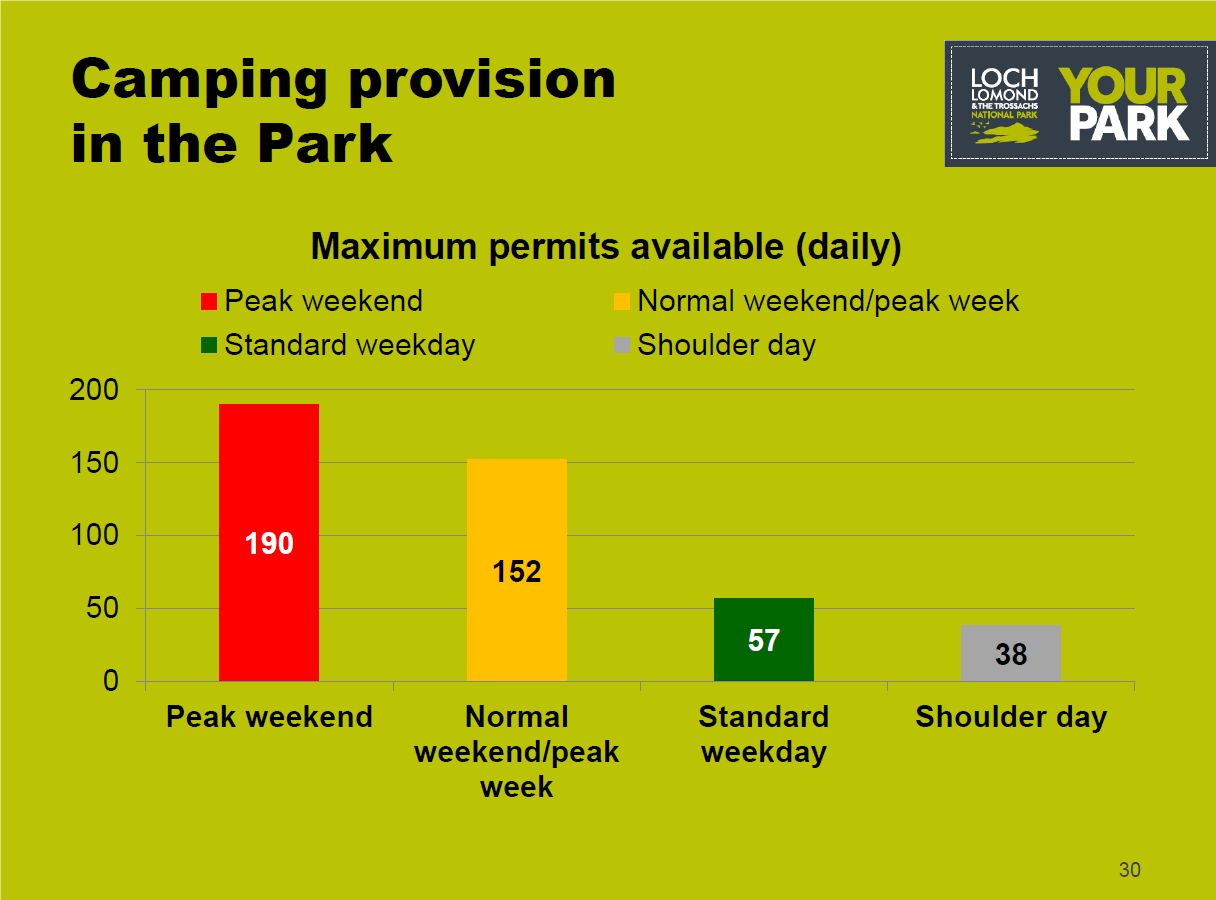
The slide shows that soon after the Your Park consultation – which failed to mention the Loch Lomond and Trossachs National Park was planning for a permit system despite the fundamental implications this had for access rights – the Park had developed its thinking on permits to such an extent that it was considering varying the number of people who could camp in its proposed camping zones by day of the week and period of the year. There is no reference to this in the Park’s letter to Ministers two months later proposing 300 “new” camping places, comprising a mixture of permits and campsites. I assume therefore the idea of varying the number of permits has been dropped because otherwise the Park could not claim to be delivering 300 places (on shoulder days it would have been under half of that).
The slide’s significance is that it provides evidence that the Park was – and still is – wanting to restrict numbers of campers to the minimum it can get away with. Why otherwise were 190 permits thought suitable for a peak weekend but only 57 on an ordinary weekday?
The slide also:
- shows up the Park’s claim that they need to limit the number of campers because campers prevent other visitors from enjoying the loch shores. If that was true the Park would have proposed FEWER camping permits on popular weekends when the loch shores are busier with other visitors and MORE in the quieter periods
- shows up the Park’s claim that byelaws are needed to protect the environment: why in any particular place would less damage be done on a peak weekend than on an ordinary weekend?
- provides further evidence of just how arbitrary the proposal for 300 camping places is and provides further evidence, if this proposal has indeed been dropped, that these secret Board “Briefing sessions” took decisions – something the Park has denied. That decision though should have been minuted and taken in public.
All this is added reason to be very sceptical of the LLTNPA when they reveal their proposals for a permit system at their December Board Meeting (they have to take “decisions” about this in public before the system is due to come into force on 1st March 2017).
